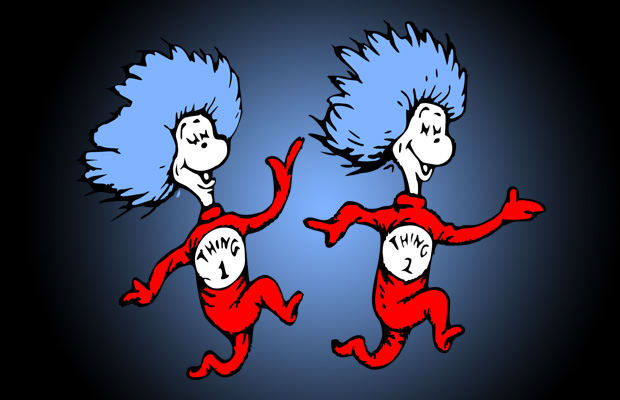Apologia
Tolerance

“Be tolerant” is today’s oft-heard moral imperative. This principle of tolerance sounds good, but careful thinkers should ask: Is it sound?
Answer: No, and yes.
It turns out that there are two senses of “tolerance.” Let’s call them Tolerance 1 and Tolerance 2. (If my labels seem to lack imagination, blame Dr. Seuss.)
Tolerance 1 is the contemporary popular understanding of tolerance. On this understanding, all views or identity claims and expressions are accepted as equal and true and good.
“It’s all interpretation” or “it’s all perspective” or “it’s all feeling” or “it’s who I am,” so a view / identity / expression may be “true for you, but not for me” (and vice versa).
According to Tolerance 1, you are intolerant if you disagree with someone’s ideas or self-identity or self-expression/ conduct. To say someone is actually mistaken or wrong violates Tolerance 1. Such intolerance is a “sin.”
But, sin or no sin, Tolerance 1 is false.
From the point of view of reason and truth, it’s simply not the case that all ideas, feelings, and expressions are equal.
Think about it. That the Holocaust occurred is true and well supported by evidence, whereas the belief to the contrary is false and not well supported by evidence. That a square has four sides is true logically, whereas a square having three sides isn’t true logically.
Think about it some more. Western democracy is a better idea morally than Soviet communism (because the former tends to respect the intrinsic moral worth of people whereas the latter does not). Also, talking with one’s spouse to resolve a dispute is a better idea morally than beating one’s spouse.
Also, feelings can be mistaken. A woman who constantly feels she is – identifies as – overweight when she actually isn’t, and thus expresses her identity by dieting to extreme, suffers from anorexia nervosa.
In other words, Tolerance 1 is an epic fail.
Now consider Tolerance 2.
Tolerance 2 is the classic understanding of tolerance.
This is the practice of forbearance toward persons who hold beliefs or engage in conduct with which one strongly disagrees. (Forbearance involves patience and showing respect to those with whom we disagree.)
Tolerance 2 is a willingness to accept a person’s right to espouse a view or express themselves or engage in behaviour even though we think the idea is mistaken or the conduct unwise or even immoral.
But, according to Tolerence 2, intolerance is not always a sin.
We may be appropriately intolerant of an idea if the idea is truly false and can be shown to be false, and we may be appropriately intolerant of a behavior if the behavior is truly harmful to self or others and can be shown to be harmful to self or others.
According to Tolerance 2, teachers are appropriately intolerant of students cheating on an exam or bullying on the playground. Also, judges are appropriately intolerant of perjury, drunk drivers, and murderers. Also, citizens are appropriately intolerant of governments that engage in deception.
In addition, I dare say, parents are appropriately intolerant of educators who claim (falsely) that the parents’ child is actually the opposite sex. Why? Because just as an anorexic’s feelings are mistaken about being overweight, so too a child’s feelings can be mistaken about sexual identity.
Clearly, Tolerance 2 (the classic understanding of tolerance) is superior, intellectually and morally, when compared to Tolerance 1 (the contemporary popular understanding of tolerance).
The question now arises: Who’s to say what’s true and good? That is to ask: How do we arbitrate between competing claims about what’s true and good?
Answer: We are to say what’s true and good. How? By using careful reasoning and careful investigation of evidence to discern what’s objectively true and good.
Hendrik van der Breggen, PhD, is a retired philosophy professor who lives in Steinbach, Manitoba.




